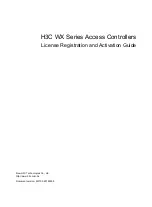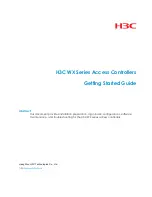
4-Port USB 2.0 Controller
Datasheet
SMSC USB20H04
Page 5
Revision 1.63 (03-30-07)
DATASHEET
Chapter 1
General Description
The USB20H04 four-port hub controller is fully compliant with the USB 2.0 Specification and does not
require firmware development. When connected to a high-speed host, the four downstream facing ports
can operate at low-speed (1.5Mb/s), full-speed (12Mb/s), or high-speed (480Mb/s). As required by the USB
2.0 Specification, the USB20H04 is fully backward compatible with legacy full-speed hosts. A dedicated
Transaction Translator (TT) is available for each downstream facing port. This architecture ensures
maximum USB throughput for each connected device when operating with mixed-speed peripherals.
The USB20H04 supports both bus-powered and self-powered configurations. For self-powered operation,
an external supply is used to power the downstream facing ports. In bus-powered mode, all power is
derived from the upstream facing port and no external power supply is required. An external USB power
distribution switch device is used to control V
BUS
switching to downstream ports, and to limit current and
sense over-current conditions.
A default configuration is available in the USB20H04 following a reset. This configuration may be sufficient
for some applications when it is desired to save the expense of an EEPROM. The controller may also be
configured from a microcontroller or an external EEPROM. When using the microcontroller interface, the
USB20H04 appears as an SMBus slave device. The EEPROM interface supports a 2-wire I
2
C device.
All required resistors on the USB ports are integrated into the USB20H04. This includes all series
termination resistors on D+ and D– pins and all required pull-down and pull-up resistors on D+ and D–
pins. The over-current sense inputs for the downstream facing ports have internal pull-up resistors.
Throughout this document the upstream facing port of the hub will be referred to as the upstream port, and
the four downstream facing ports will be called the downstream ports.
1.1 Applications
The Universal Serial Bus (USB) hub may be used in a number of applications:
Standalone
hubs
Keyboards
Monitors
Motherboard
hubs
Docking stations and port replicators
Printers and scanners
External storage devices
Auxiliary battery docks






































